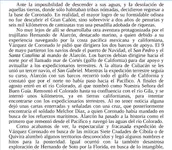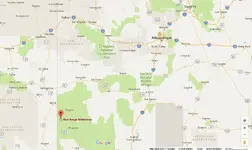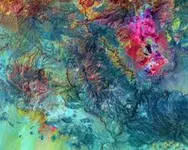Cortes was not discouraged in their attempts to exploration, despite this latest failure, and immediately began organizing a fourth expedition to the newly discovered lands. In front of it was the experienced captain Francisco de Ulloa, with instructions to go completely around the Island then considered California, as well as search for the missing Diego Hurtado de Mendoza.
The expedition consisted of three boats: St. Agatha, St. Thomas (probably led by Domingo del Castillo, who drew the map of the peninsula of Baja California) and Trinidad, the latter in command of Ulloa. They also were four Franciscans and Francisco de Terrazas as an observer.
The three ships departed on July 8, 1539 from Acapulco; however, at the height of the Marias Islands they faced a storm, so the ship St. Thomas left the group he needed repairs. The other two ships arrived in the bay of Santa Cruz on August 29, where they found the burned remains of the camp set up by Cortés. They then followed the planned route and crossed the Gulf of California to traverse along the coasts of Sinaloa and Sonora. On the tour, Ulloa landed on these shores some points, and on September 28 desmbocadura reached the Colorado River, where they landed on a sandbar and named the mouth of the "San Andrés Ancon" river. Here is an excerpt of the minutes of takeover is transcribed:
" ... the very magnificent Mr. Francisco de Ulloa, lieutenant governor and captain desta armed by the illustrious Marquis del Valle de Guajaca, took office in San Andrés ancón and vermilion sea, which is on the coast Desta New Spain hazia North, which is at height of thirty-three degrees and a half, ... putting his sword, in saying that if abía someone who contradicted him, he was ready to defend him, cutting her trees, tearing herbs, wagging stones from one part to another, and drawing water from the sea. all in sign of possession "
Once the takeover of the northern end of the Sea Bermeja, named after the reddish coloration of the waters stained with those from the Colorado River, they started back to Santa Cruz. 2 or 3 October arrived at the San Luis Gonzaga Bay, 6 to Bahia de los Angeles, and on October 19 they returned to Santa Cruz, where they continued to travel and turned Cabo San Lucas. On January 20, 1540 took possession of Cedros Island, after fighting hard against indigenous place. From here, Ulloa decides to send the information collected on the trip to Cortes, aboard the largest ship, the Santa Agueda, head of Preciado. Francisco de Ulloa, meanwhile, continues the journey with North course aboard the Trinidad, to get lost in the sea, without knowing more about him.
This was the last expedition sent Hernán Cortés to California. Although he never got the material rewards expected with these companies, Cortés enters again in history as the discoverer of Baja California. In addition, the Bermeja Sea, is now known as the Sea of Cortez or Gulf of California and the "San Andrés Ancon" river now known as the Colorado River.





 Maybe I really have stumbled upon Don Jose's Tayopa...LOL
Maybe I really have stumbled upon Don Jose's Tayopa...LOL



